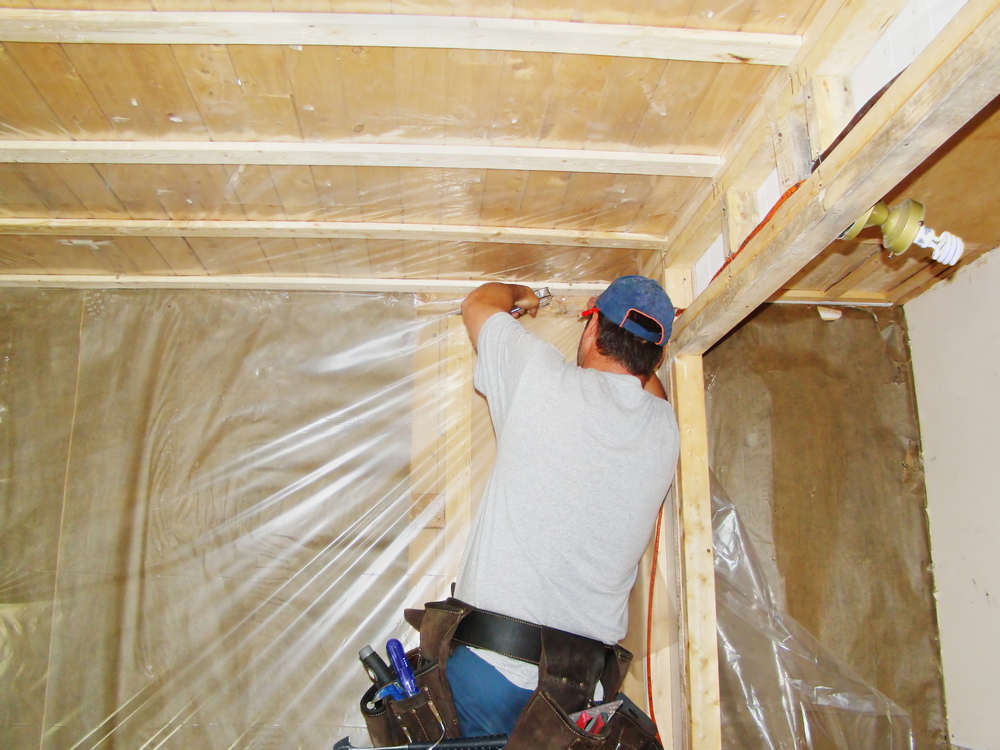Choosing the Right Vapor Barrier: A Guide for Homeowners and Property

When it comes to insulation installation, one of the most important components to consider is a vapor barrier. A vapor barrier is a material that helps prevent moisture from passing through walls, floors, and ceilings, which can cause damage to insulation and other building materials. In this article, we will explore the different types of vapor barriers and provide guidance on how to select the right one for your specific needs. As a leading insulation installation company in West Florida, Koala Insulation of West Florida can provide expert guidance to help you choose the best vapor barrier for your project.
What is a Vapor Barrier?
A vapor barrier is a material that is installed on the warm side of an insulated assembly to help prevent the diffusion of moisture through the walls, floors, or ceilings. It works by reducing the amount of water vapor that can pass through the insulation and other building materials, which helps maintain the effectiveness of the insulation and prevent damage to the building structure.
Types of Vapor Barriers
There are several types of vapor barriers available, including polyethylene, foil, and kraft paper. Each type has its own benefits and drawbacks. Polyethylene is a common vapor barrier material that is lightweight and easy to install. Foil is a reflective vapor barrier that helps to reduce radiant heat transfer. Kraft paper is a type of vapor barrier made from recycled materials that is typically used in conjunction with fiberglass insulation.
Selecting the Right Vapor Barrier
To select the right vapor barrier for your project, it is important to consider factors such as climate, building materials, and intended use.
- What type of vapor barrier do I need? The type of vapor barrier you need will depend on your specific insulation needs. A professional insulation installer can help you determine the best type of vapor barrier for your project.
- What is the best thickness for a vapor barrier? The thickness of the vapor barrier will depend on the type of material used and the intended use. In most cases, a thickness of 6 mils is recommended for polyethylene vapor barriers.
- Is clear or black plastic better for vapor barrier? Clear and black plastic have similar properties as vapor barriers, so the color doesn’t matter. However, clear plastic is easier to inspect for damage or tears.
- Is a thicker vapor barrier better? Thicker vapor barriers are not necessarily better. In fact, a thicker vapor barrier can be more difficult to install and can actually trap moisture inside the wall assembly.
- Is 6 mil plastic a good vapor barrier? 6 mil plastic is a commonly used thickness for polyethylene vapor barriers and is considered a good choice for most insulation applications.
- Do vapor barriers cause mold? Vapor barriers do not cause mold growth. However, if moisture becomes trapped between the vapor barrier and the insulation, mold can grow. Proper installation is key to preventing mold growth.
- Can you use painters plastic as a vapor barrier? Painters plastic is not recommended for use as a vapor barrier because it is not designed for this purpose and may not provide adequate protection.
- Should I tape vapor barrier? Taping the vapor barrier is essential to prevent air leakage and ensure the effectiveness of the barrier. It is recommended to use a high-quality tape designed specifically for vapor barriers.
- Does the vapor barrier need to be clear? The color of the vapor barrier does not affect its performance. However, clear vapor barriers are easier to inspect for damage or tears.
Installation Tips
Proper installation is crucial to the effectiveness of a vapor barrier. Here are some tips for installing a vapor barrier:
- Ensure the surface is clean and free of debris before installing the vapor barrier.
- Make sure the vapor barrier is installed on the warm side of the insulated assembly.
- Overlap the edges of the vapor barrier by at least 6 inches and use a high-quality tape designed for vapor barriers to seal the seams.
- Avoid puncturing or tearing the vapor barrier during installation.
- Ensure that any penetrations through the vapor barrier, such as electrical outlets, are properly sealed.
If you are unsure about how to install a vapor barrier properly, it is recommended to seek professional installation help.
A vapor barrier is an essential component of any insulation installation project. It helps to prevent moisture from passing through walls, floors, and ceilings, which can cause damage to insulation and other building materials. By selecting the right vapor barrier and installing it properly, you can ensure the effectiveness of your insulation and protect your building from moisture damage.
At Koala Insulation of West Florida, we are committed to helping homeowners and commercial property owners choose the best vapor barrier for their specific needs. Contact us today for expert guidance and installation services.
Find Your Location


Get a quote



